THE TSUBA THE KATANA AND THE SAMURAI SOUL PART 4
How was that possible?
What the hell has all this horror got to do with bushidō?
Facing the horror of Shoah, Asian Holocaust, and the many genocides of the 20th century, many scholars of different disciplines have tried to answer the question “How was that possible?”.
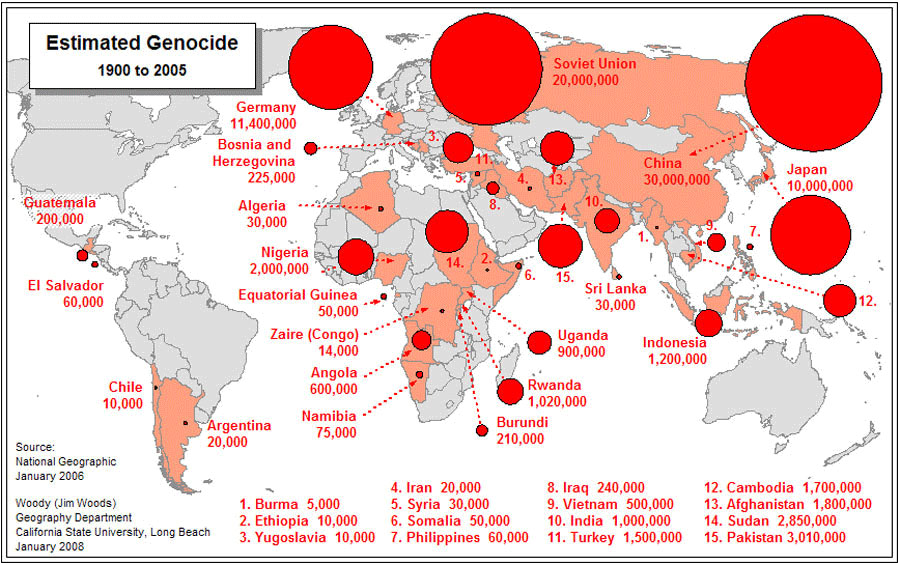
Of course, for each of these horrific cases, there was always a unique, complex combination of specific factors. However, from the famous Milgram experiment (1963) onwards, scholars have found that some common factors act as Kantian Bedingung der Möglichkeit. They act, in other words, as necessary conditions or conditions of possibility: they do not produce or cause mass extermination, genocide, or horrific mass murder, but make them possible.
The first condition of possibility is the dehumanization of an ethnic group, a religious group, an entire population, a national community, some people categorized as making up a “different group” (like homosexuals or mentally disabled, for example). The failure to recognize other people as fellow human beings is considered today, by the vast majority of scholars, to be a fundamental enabler of violence across cultures and throughout history.
Dehumanization is not racism, but it usually entails racism and often starts with a suprematist and racist ideology. This last is a coin with two faces: on one side, the belief in one’s own group cultural/historical/social/racial superiority; on the other one, a cluster of prejudices and a sentiment of aversion against the targeted group or the out-group.
Dehumanization, however, is not racism or suprematism: it is the result of an ideological process that can spread over several decades. It starts by drawing a line between “our group” and “the others”, and through the dissemination of increasing xenophobia, hierarchical views, and “anti-” beliefs, achieves to turn that separation line into a gap, and that gap into an abyss. This process leads to two different attitudes:
- My culture, my status, my power, my history make me undoubtedly superior to you. You’re not as I am. To tell the truth, we have nothing in common. You’re less than me. You’re a being but not as human, powerful, and blessed as I am. You’re not a human being as I am. We do not share a common humanity. If you’re less than me, I can consider you as a sort of subhuman, an under human, a less than a human being. You’re a worm, an ape, a pig. Well, I could make some use of you, so at least you won’t be a useless mouth to me. My violence on you is motivated primarily by instrumental gain and fully justified by what I’ve been taught by authorities for many years or decades.
- You’re not as I am. Do not compare us! To tell the truth, we have nothing in common. There must be something wrong with you. What’s wrong with you? There’s an abyss between you and me, and you stand on the other side of the righteousness. My violence on you is not simply legitimized and validated, but is also morally motivated: you deserve it! In the name of a god or of a supposed science, I can rightly punish you. I can even make you disappear from this planet ’cause you’re a harmful dangerous race of parasites. And I can do it, feeling well, as I’m on the “right side” of history, doing the “right” thing, as all my leaders have been repeating to me for many years or decades.
Anti-Chinese sentiment has been present in Japan since at least the Tokugawa period (as anti-semitism had been present in Europe since the very first Crusade). The line that has been drawn for centuries between China and Japan was turned into a gap by the first generations of bushidō theorists, and into an abyss by the imperial bushidō. Yukio Ozaki, Yukichi Fukuzawa, and Uemura Masahisa supported the First Sino-Japanese War and seasoned their invented tradition with national pride and a deep aversion towards Chinese culture and people. That pride and that aversion were already making up an ideology that some years later was bent to serve the aggressive imperialism of the Japanese blessed-by-god Empire. 50 years of bushidō, 50 years of indoctrination and brainwashing on the Japanese superior race, and the Chinese inferiority and wickedness, made that soldier skewer a Chinese baby as if she were a chicken. 50 years of bushidō made the “doctors” of Unit 731 call their victims maruta, in Japanese “wooden logs”.
The second condition of possibility is made up of a series of intertwining factors: undisputed obedience to an order perceived as comprehensible and justified, coming from an authority perceived as legitimate or fully validated, in a social context of conformity where individuals undergo pressures both from peers and superiors. People who have been conditioned to blindly obey, conform, and meet others’ expectations are more inclined to commit a violent crime under a specific order. From the 1950s on (the Asch conformity experiments started in 1951), many scholars, especially in Social Psychology, have investigated and proved the power of blind obedience and the dynamic between authority and responsibility in the so-called “crimes of obedience”.
Here again, the bushidō and all of its creators and promoters, face a huge historical responsibility.
Loyalty was conceived as the core virtue of bushidō, and the pure distillate of martial spirit. But what is bushidō loyalty? What are we talking about?
The core of the imperial bushidō was chūkun aikoku, patriotism and absolute loyalty to the emperor. Revering the emperor was tied to undisputed, absolute obedience not just to the divine Tennō, the “Heavenly Sovereign”, but to every authority he validated and legitimized (directly or indirectly). In the Japanese martialized society from the late Meiji to early Showa, children were taught to unconditionally obey their parents, wives their husbands, workers their supervisors, soldiers their superiors. The bushidō loyalty was not – as Westerners often guess – faithfulness, fidelity, fealty, adherence, homage, devotion. Nope. The bushidō loyalty was martial obedience, namely absolute obedience. The imperial bushidō taught two generations of Japanese teenagers that docility, acquiescence, uncritical subservience, and unquestioning submission are praised, while every form of criticism is firmly punished as a betrayal. It taught recruits to obey orders blindly and quickly to avoid any physical punishment. For 40 years, bushidō martialized the whole of Japanese society, putting immense pressure to conform with norms on any individual. Still today, many Japanese adults behave as they are expected to behave even if they might prefer to do things differently: they choose to comply for fear of being different, and for many of them it is extremely important to be able to perfectly meet the expectation of family/society/managing directors/instructors/authorities.
A former Japanese Army officer who served in China during WWII, Uno Shintaro, stated: «The major means of getting intelligence was to extract information by interrogating prisoners. Torture was an unavoidable necessity. Murdering and burying them follows naturally. You do it so you won’t be found out. I believed and acted this way because I was convinced of what I was doing. We carried out our duty as instructed by our masters. We did it for the sake of our country. From our filial obligation to our ancestors. On the battlefield, we never really considered the Chinese humans. When you’re winning, the losers look really miserable. We concluded that the Yamato race was superior» (in Haruko Taya Cook & Theodore F. Cook, Japan at War, 1993).
FACING RESPONSIBILITIES AND COMING TO TERMS WITH HISTORY
The invented tradition of bushidō has molded Japanese society for 50 years, indoctrinated soldiers and officers, switch off Buddhist compassion, overturned life and death, and opened the door to the worst atrocities of the 20th century.
None of the theorists and promoters of bushidō was judged responsible for those horrors, but they were. Yes, they were responsible.
«Few of those involved with Unit 731 have admitted their guilt. Some caught in China at the end of the war were arrested and detained, but only a handful of them was prosecuted for war crimes. In Japan, not one was brought to justice. In a secret deal, the post-war American administration gave them immunity for prosecution in return for details of their experiments. Some of the worst criminals, including Hisato Yoshimura, who was in charge of the frostbite experiments, went on to occupy key medical and other posts in public and private sectors» (UNIT 731 Japan’s Biological Warfare Project, cit.).
As to the Rape of Nanking, the Nanjing War Crimes Tribunal established in China in 1946 by the government of Chiang Kai-shek judged four Japanese Imperial Army officers accused of crimes committed during the Second Sino-Japanese War. They were Lieutenant General Hisao Tani, general Rensuke Isogai, company commander Captain Gunkichi Tanaka and Second Lieutenants Toshiaki Mukai and Tsuyoshi Noda, made famous by the contest to kill 100 people using a sword. Hisao Tani was found guilty on 6 February 1947 and executed by a firing squad on 26 April. All the accused were sentenced to death in 1947, except for General Rensuke Isogai who was sentenced to life imprisonment, released in 1952, and allowed to return to Japan where he died in 1967.
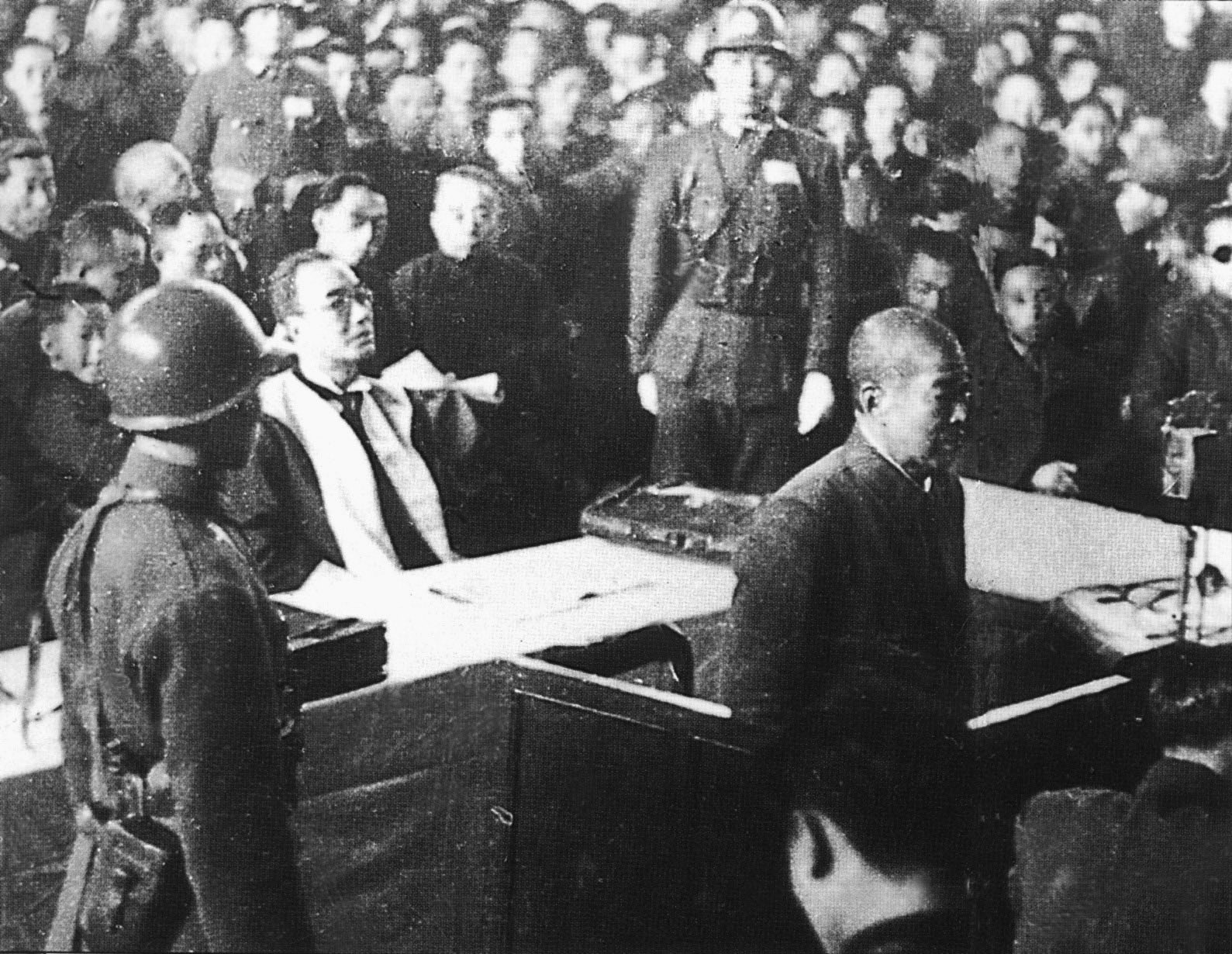
Lieutenant General Tani Hisao on trial in Nanjing, China, in 1947.
General Iwane Matsui was convicted of war crimes at the International Military Tribunal for the Far East (IMTFE, aka Tokyo Trial) and executed by hanging. He and other convicted war criminals were enshrined at Yasukuni Shinto Shrine in 1978 and are today honored as martyrs. Prince Asaka Yasuhiko had been granted immunity by General Douglas MacArthur as a member of the imperial family.
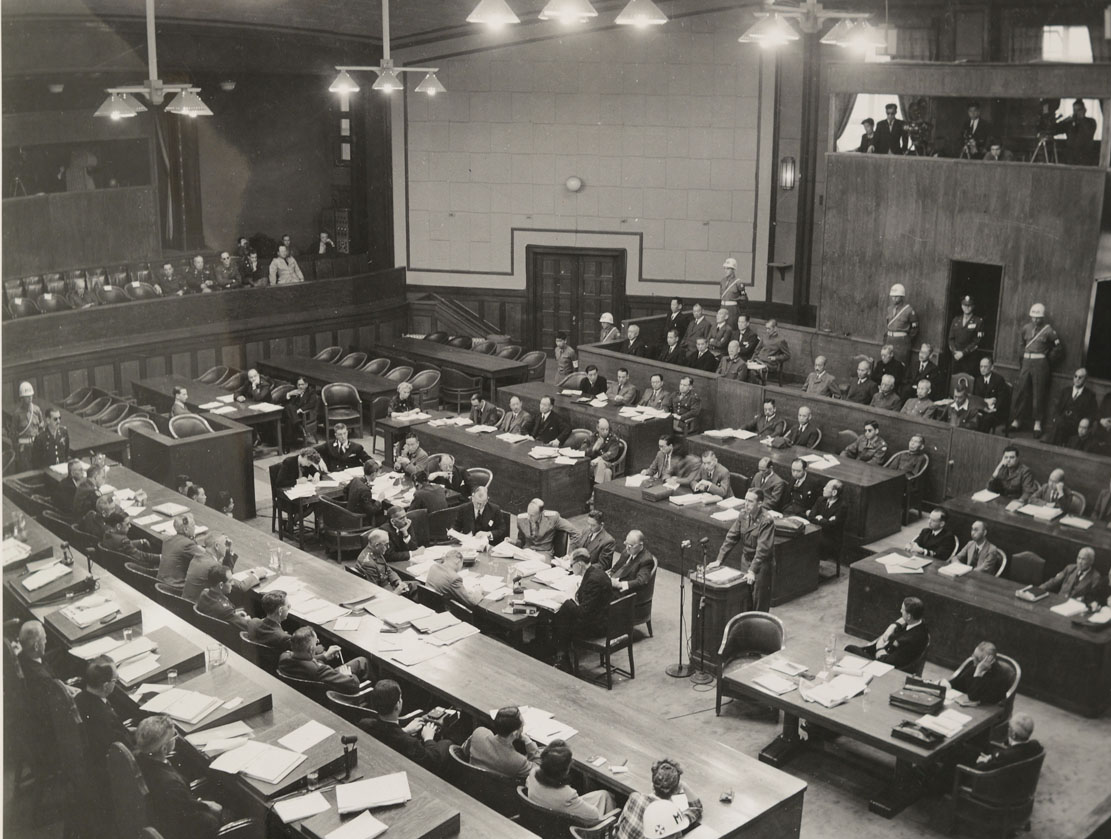
Maj. Ben Bruce Blakenley, defense counsel, addresses the court at the International War Crimes Tribunal for the Far East (Tokyo Trial), on May 14, 1946.
Between the late 50s and the early 60s, all the sentenced Japanese war criminals were released from prison and politically rehabilitated.
Many Japanese prime ministers, including Shinzo Abe, gave a formal apology for Japanese actions during the war, but these inadequate apologies, similar to bogus excuses, not only did not close old diplomatic wounds with other Asian countries (such as South Korea and China) but opened new tensions. Moreover, some politicians like Abe are members of the powerful revisionist lobby Nippon Kaigi that since 1997 openly denies many Japanese war crimes.
Minimization of all the horrific crimes perpetrated by Japanese troops, historical revisionism, and negationism are widespread in present-day Japan. Many government-approved history textbooks used in secondary education whitewash Japanese crimes during WWII and frequently omit, purge, or downplay events. The texts that tell the WWII story without too much censorship are often harshly criticized, when not rejected.
In The Wages of Guilt, published in 1994, the Dutch professor of Human Rights and orientalist Ian Buruma wrote that the Japanese had never sincerely “atoned” (at least at an institutional level) their faults for the atrocities committed against other peoples of Asia. Unfortunately, it still holds true; some wounds are still bleeding today, and what’s worse, we’re facing a resurgence of bushidō.
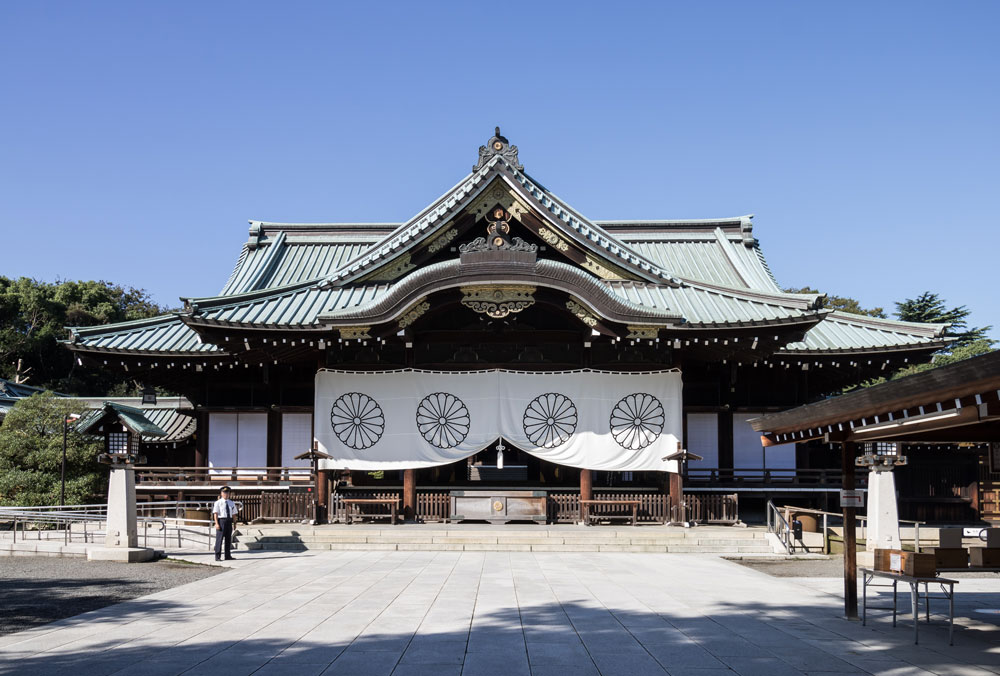
Yasukuni Jinja, photo by Kakidai (licensed under Creative Commons Attribution-Share Alike 4.0 International). Yasukuni is a Shintō Shrine located in Chiyoda, Tokyo, founded by Emperor Meiji to commemorate all the Japanese who died serving the Emperor. The sanctuary’s list includes over 1000 people convicted of war crimes by the Tokyo Trials, including 14 Class A war criminals (the highest degree of indictment). No Emperor of Japan has visited Yasukuni since 1975.
THE BUSHIDO CLEANSING AND THE ADOLESCENTIZATION OF SAMURAI
«The identification of bushidō with militaristic ideologies meant that the post-war backlash against bushidō was severe» (O. Benesch, cit.). In the postwar period, bushidō was comprehensively rejected as a dangerous ideology and the wartime samurai image was taboo. «Samurai films, a popular genre even during the silent film era, were censored by the American occupation army. Directors could still make samurai films, but they could not glorify violence, self-sacrifice, or loyalty to the emperor. A samurai film boom occurred during the 1950s after the occupation ended, when classic films such as Akira Kurosawa’s Seven Samurai appeared, but they no longer portrayed an ultranationalist version of the samurai. The US occupation forces also banned martial arts practice, which was seen as another vehicle for disseminating dangerous bushido and fascist ideology. Even when martial arts like kendo reemerged, they emphasized cooperation and competition and deemphasized martial applicability» (M. Wert, cit.).
From the 1970s on, especially during the 80s and 90s, however, bushidō was revived as a cultural explanation for Japan’s recovery and rapid economic growth. This new bushidō generally stresses loyalty, virtue, honesty, and self-sacrifice, and looks purified from overtly militaristic elements and chauvinistic ingredients. Unfortunately, this operation should not be carried out. Although it does not arise as a fascist and chauvinist political ideology, the bushidō of Ozaki and Fukuzawa was already steeped in fantasy, nationalism, anti-Semitism, aversion to Chinese people and culture. These “embarrassing” features are not fringes of the very first bushidō: they made up its backbone. Every cleansing effort turns out to be an anti-historical cosmetic operation that should not be done: it would be like trying to clean up Nazi ideology from anti-Semitism.
However, this operation has not only been attempted but got also a remarkable success, and this fact is as dangerous as disgusting: «The idea that bushidō was an ancient tradition that had been corrupted by militarists in early Shōwa soon came to dominate popular understandings of the subject, and scholars embarked on the task of seeking ‘true’ bushidō in Japan’s earlier history» (O. Benesch, cit.).
The 80s and 90s bushidō revival revolved around the publication of many commentated editions of Nitobe Inazō’s The Soul of Japan, successfully translated into many languages, especially in the West (Nitobe lived in the US and Switzerland, was Christian and knew how to make himself understood by Westerners).
«Nitobe Inazō’s work was eagerly bought by business people seeking to understand the secret of Japan’s corporate culture, while new editions of samurai classics such as the Hagakure and Miyamoto Musashi’s Book of Five Rings filled bookshop shelves» (O. Benesch, cit.).
In more recent years, fears induced by globalization, the economic crisis, and the growing Westernization have prompted many nostalgic, conservative, and rightist Japanese figures to repropose the bushidō in a nationalist and anti-Western way. A horrific temptation, to say the least.
In the West, those who want to read a book about the lost world of samurai, and start a search on an online bookstore, among the very first results find both Nitobe and Tsunetomo. These books have been translated into many languages, presented in engaging ways, sold in all formats. Let’s say it clearly: it’s quite a problem. Not the fact of being published, of course, but their being first-page results in almost all search about samurai poses a problem. They are not easy books nor books for all readers: they can be very misleading and require a good level of historical knowledge to be fully understood. In any case, they are not “the antique way of the samurai” or “the traditional secret code of the samurai”. That’s bullshit. Dangerous bullshit.

The intimate connection between bushidō and sport from the late 19th century onwards had a powerful influence; not by chance, the fortune of bushidō has never faded and never knew ups and downs in many schools of martial arts, both in Japan and elsewhere, especially in the West. For most schools “preserving tradition” is a kind of sacred mantra. Shame that this “tradition” is often made up by the bushidō and a fake, prayer card-style, samurai imagery.
«The popular view holds that bushidō began to develop as a martial ethic in the late12th century, but that samurai were too preoccupied with warfare and practical matters to formally codify bushidō before the late sixteenth century. According to this account, aspects of bushidō evolved as the role of the samurai in Japanese society changed before being effectively eliminated by successive government reforms in the early Meiji period (1868–1912). It is commonly suggested that Nitobe Inazō formulated and popularized an idealized version of this martial ethic, which was appropriated and adapted by the Meiji, Taishō, and early Shōwa governments as a ruling ideology that redirected loyalty from feudal lords to the emperor» (O. Benesch, cit.).
Again, we face here a dangerous mix of fiction, oversimplification, and lack of historical and political awareness.
The figure of the samurai common to some martial art schools today, characterized by a sort of “spiritual” profoundness, strength of character and physical self-control is an easily chewable oversimplification, unsuitable even for a teenager. It’s widespread for many reasons, the main one being that a romanticized, popularized, oversimplified samurai is easy to understand, buy, consume, dream.
The oversimplification of an issue is a reduction of its complexity. A system whatsoever is said to be a complex one when its many parts/components interact with each other in multiple ways, giving birth to emergent properties, that’s to say to something far greater than the sum of its parts (a living human body and our society are examples of complexity). Oversimplify an issue means erasing the interdependence or the multiple-level interactions among some parts or components, turning them into separate compartments or segments. Reducing the complexity – unfortunately – means dumbing down an issue to make it easily chewable.
The popularization of an issue is an operation carried out to make it more attractive to the general public before turning it into a consumable good. This entails a different conceptual pauperization by removing those elements/factors that are credited to be or seem to be a hard/tough sell. Homosexuality and brutality are “forgotten” sides of samurai that do not conciliate with a manly, honorable, sellable warrior, fighting to help the world become a better place.
The romanticization of an issue is a sort of photoshopping procedure that glamorizes a character whatsoever romantically and excitingly to make him/her dreamable both by adolescents and by adults with adolescent imagery. And dreams are best-sellers and money-making machines.
3D Anime television series, manga series, comics, and kid cartoons turn the fictional samurai character into a sort of superhero, while the Hollywood-style movies mold it as a good-looking athletic male with just a spicy touch of oriental features (just a pinch not to disturb the western kalokagathia horizon).
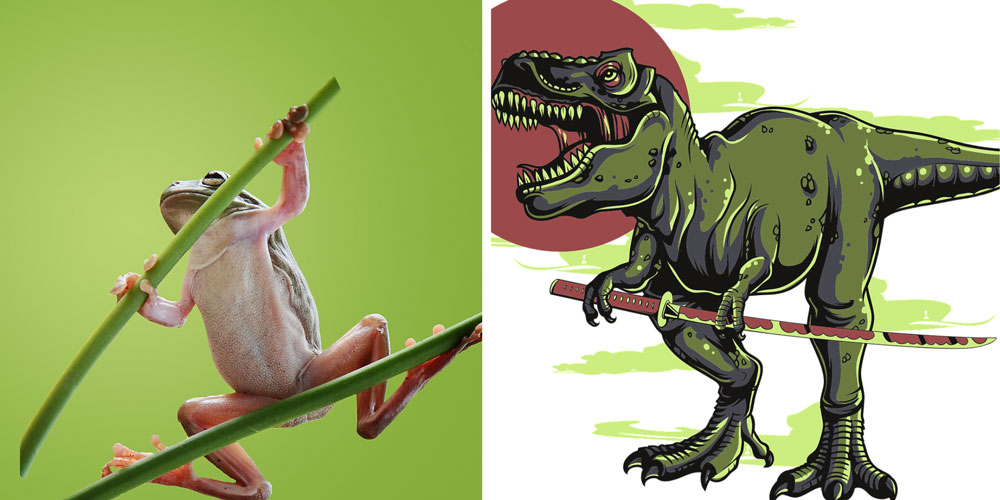
In a famous Hollywood movie, the high-ranking samurai Katsumoto Moritsugu was played by Ken Watanabe, a good-looking Japanese actor, now 61, that in his youth was an athletic, charming dude 1.84 m high. Well, we know from skeletal measurements and the dimensions of samurai armors, kept by many museums all over the world, that the average height of a samurai in the Edo period was 1.58 cm. And we know that the horses ridden by them were mostly sturdy Kisouma, Japanese equine that resembled stocky ponies rather than modern-day thoroughbreds.
There is worse to come, however.
Katsumoto: Life in every breath. That is the way of the warrior. That is Bushido!
Nathan Algren: Hai.

Note as well that this film’s plot was inspired by the 1877 Satsuma Rebellion when both the word and the concept of bushidō were completely unknown.
The adolescentization and McDonaldization of the samurai figure and its faceted violence is not an issue per se, but becomes a problem in a world that loves to consume too much pop goods, and ignores history. And greedy, uninformed, unquestioning consumers tend to be the prey of manipulative and illiberal tendencies.
HISTORY REPEATS ITSELF UNTIL YOU KNOW IT.
BIBLIOGRAPHY AND LINKS
IF YOU WANT TO KNOW MORE ON THE RAPE OF NANKING
Book – Iris Chang, The Rape of Nanking: The Forgotten Holocaust of World War II, Basic Books, 1997.
The Nanking Massacre Project | Yale University Library
The Rape of Nanking: Analyzing Events from a Sociological Perspective, Stanford University.
Memorial Hall of the Victims in the Nanjing Massacre (1937-1938)
Website of the International Military Tribunal for the Far East (IMTFE), informally known as the Tokyo War Crimes trial.
IF YOU WANT TO KNOW MORE ON UNIT 731
Introductive websites
Unit 731 on Wikipedia
UNIT 731- Japan’s Biological Warfare Project
Bearing Witness to the Nanjing Atrocities by Facing History and Ourselves, teacher’s resources.
An interesting article on The New York Times:
Nicholas D. Kristof, Unmasking Horror – A special report. Japan Confronting Gruesome War Atrocity, March 17, 1995
Books
Sheldon Howard Harris, Factories Of Death: Japanese Biological Warfare, 1932-1945, and the American Cover-Up, Routledge, 1994.
Daniel Barenblatt, A Plague Upon Humanity: The Secret Genocide of Axis Japan’s Warfare Operation, Profile Books Ltd., 2006
Peter Williams and David Wallace, Unit 731: Japan’s Secret Biological Warfare in World War II, Free Press, 1989
Yan-jun Yang and Yue-him Tam, Unit 731: Laboratory of the Devil – Japanese Biological Warfare in China 1933-45, Fonthill Media, 2018
Hal Gold, Unit 731 Testimony, Tuttle, 1995
BOOKS AND ARTICLES I’VE FOUND ESSENTIAL TO READ
Oleg Benesch, Inventing the Way of the Samurai. Nationalism, Internationalism, and Bushidō in Modern Japan, Oxford University Press, 2014.
Lawrence Fouraker, “Voluntary Death” in Japanese History and Culture, in Dying and Death: Inter-Disciplinary Perspectives, edited by Asa Kasher, Rodopi, Amsterdam-New York, 1st edition 2007.
Andrew Rankin, Seppuku: A History of Samurai Suicide, Kodansha USA, 2011.
Stephen Turnbull (1), Katana: The Samurai Sword, Osprey, UK, 2010.
Stephen Turnbull (2), Samurai in 100 objects, Frontline Books, UK, 2016.
Oscar Ratti & Adele Westbrook, Secrets of the Samurai. The Martial Arts of Feudal Japan, Tuttle Publihing, Japan-USA-Singapore, 1973.
Michael Wert, Samurai. A concise History, Oxford University Press, 2019.
Janice Matsumura and Diana Wright, Japanese Military Suicides During the Asia-Pacific War: Studies of the unauthorized self-killings of soldiers, in The Asia-Pacific Journal, Japan Focus, Volume 13, Issue 25, No. 2, Jun 22, 2015.
Constantine Nomikos Vaporis, Samurai: An Encyclopedia of Japan’s Cultured Warriors, ABC-CLIO, 2019.
Constantine Nomikos Vaporis (2), Samurai and Merchant in Mid-Tokugawa Japan: Tani Tannai’s Record of Daily Necessities (1748-54), in Harvard Journal of Asiatic Studiesx, vol. 60, no. 1, June 2000, pp. 205-227
Luke S. Roberts, Growing Up Manly: Male Samurai Childhood in Late Edo-Era Tosa, in Child’s Play: Multi-Sensory Histories of Children and Childhood in Japan, edited by Sabine Frühstück and Anne Walthall, University of California Press, 2017.
Joshua Archer, Understanding Samurai Disloyalty, in New Voices, vol. 2, December 2008, pp. 80-102
(https://newvoices.org.au/newvoices/media/JPF-New-Voices-Vol-2-05-disloyalty_archer.pdf)
Sonora Hidehiro, The Decline of the Japanese Warrior Class 1840-1880, in Japan Review, no. 1, 1990, pp. 73-111 (https://www.jstor.org/stable/25790888).
Kozo Yamamura, The Increasing Poverty of the Samurai in Tokugawa Japan 1600-1868, in The Journal of Economic History, vol. 31, no. 2, June 1971, pp. 378-406.
Christopher Hellman, The Samurai Mind. Lessons from Japan’s Master Warriors, Tuttle Publishing, 2010.
- Tsuyoshi Ohnishi & Tomoko Ohnishi (1), Philosophy, Psychology, Physics and Practice of Ki, eCAM 2009; 6 (2) pp. 175–183.
- Tsuyoshi Ohnishi & Tomoko Ohnishi (2), The Nishino Breathing Method and Ki-energy: A Challenge to Traditional Scientific Thinking, eCAM 2006; 3 (2), pp. 191–200.
Tsuba: Guía práctica para el estudio de la guarda del sable japonés, Revista Ecos de Asia, Especial Año Dual, no. 7, 2014, Universidad de Zaragoza.
Brian Victoria, A Zen Nazi in Wartime Japan: Count Dürckheim and his Sources – D.T. Suzuki, Yasutani Haku’un and Eugen Herrigel, in The Asia-Pacific Journal, Japan Focus, vol. 12, issue 3, no. 2, Jan 13, 2014.
Françoise Biotti-Mache, Un rite social de mort: seppuku aspects historiques, in L’Esprit du temps, « Études sur la mort », 2011/2 no. 140, pp. 113-122.
WEBSITES AND ORIGINAL/INTEGRAL FREE TEXTS
https://www.hawaii.edu/powerkills/NOTE5.HTM
Integral text of R.J. Rummel, Statistics of Democide: Genocide and Mass Murder Since 1900, Charlottesville, Virginia: Center for National Security Law, School of Law, University of Virginia, 1997; and Transaction Publishers, Rutgers University
https://www.tofugu.com/japan/bushido/
Interesting article: Bushido: way of total bullshit. Everything Tom Cruise taught you about samurai is wrong.
www.nihonto.com (https://www.nihonto.com/)
Nihonto.com is the commercial websites by Fred Weissberg, a member of the Nihon Bijutsu Token Hozon Kyokai in Japan, a member of the Board of Directors of the American Branch of the NBTHK, the President and a member of the board of directors of the Northern California Japanese Sword Club. This website is full of excellent educational information on Japanese swords, sword history, swordsmiths, and other related topics.
Markus Sesko, Sword Prices, Origami, and Samurai Income.
https://terebess.hu/zen/UnfetteredMind.pdf
Here’s the integral text of The Unfettered Mind. Writings of the Zen Master to the Sword Master, by Takuan Sōhō (1573~1646), translated by William Scott Wilson.
https://terebess.hu/zen/mesterek/Munenori.html
Integral text of Martial Arts: The Book of Family Traditions by Yagyū Munenori (1571~1646), translated by Thomas Cleary.
https://terebess.hu/zen/neko.pdf
Integral text of Neko no Myōjutsu in the version by K. von Dürckheim who received the text from his Zen Master Teramoto Takeharu.
https://aikirichmond.org/wp-content/uploads/2016/10/the-mysterious-magical-art-of-the-cat.pdf
Integral text of Neko no Myōjutsu in the version by Stephen Earle.
http://www.orangecountyki.org/PDFs/KiBreathingTranslation.pdf
Ki Breathing text by Tōhei Kōichi Sensei.
https://www.themathesontrust.org/papers/fareasternreligions/mt-hagakure.pdf
Hagakure text.

Alyx Becerra
OUR SERVICES
DO YOU NEED ANY HELP?
Did you inherit from your aunt a tribal mask, a stool, a vase, a rug, an ethnic item you don’t know what it is?
Did you find in a trunk an ethnic mysterious item you don’t even know how to describe?
Would you like to know if it’s worth something or is a worthless souvenir?
Would you like to know what it is exactly and if / how / where you might sell it?
